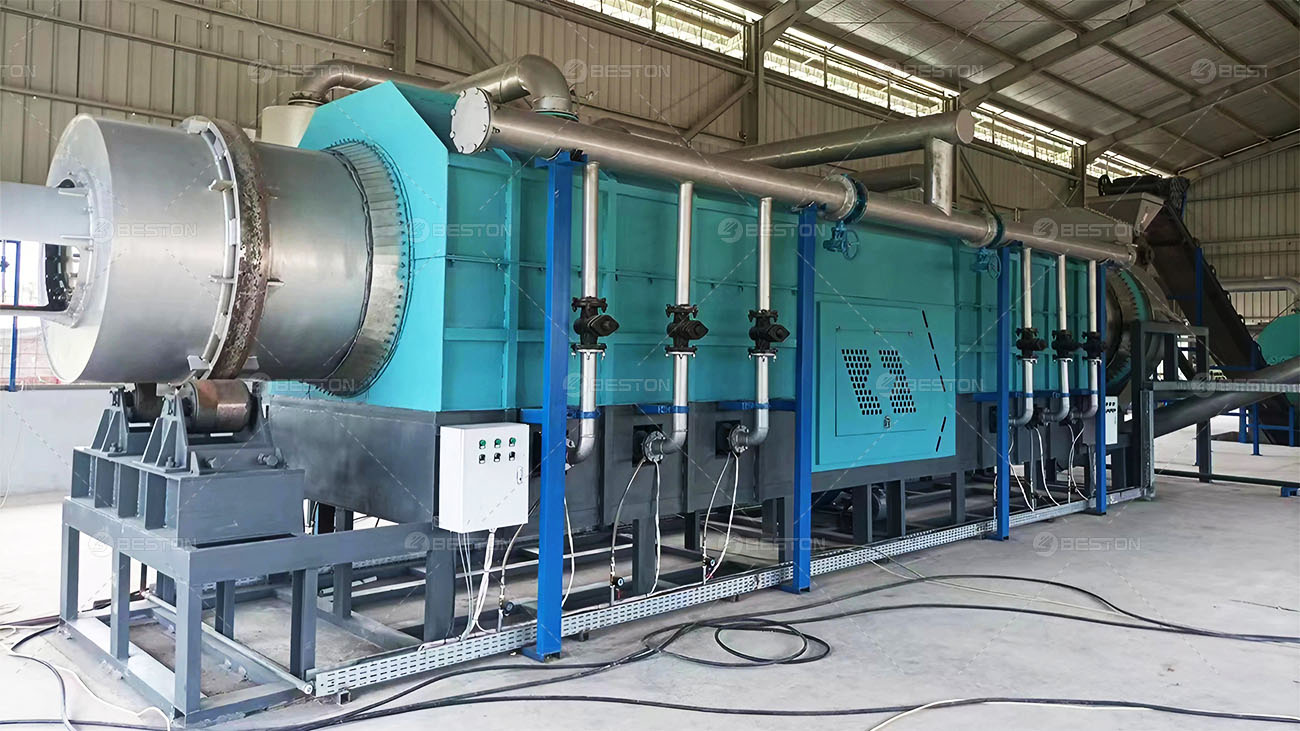Palm kernel shell charcoal is gaining prominence as a viable and sustainable fuel source due to its high energy content and eco-friendly attributes. The production process of palm kernel shell charcoal involves the conversion of palm kernel shells into charcoal using a specialized machine. This article delves into the steps and considerations required for the efficient production of palm kernel shell charcoal, emphasizing the role of the palm kernel shell charcoal making machine in optimizing the process.

Understanding Palm Kernel Shell Charcoal Production
Palm kernel shells are a byproduct of palm oil extraction, characterized by their hard texture and high calorific value. Transforming these shells into charcoal involves a series of well-defined stages: drying, pyrolysis, and cooling. The efficiency of each stage significantly impacts the overall quality and yield of the charcoal.
1. Drying
Before pyrolysis, the palm kernel shells must undergo a drying process to reduce their moisture content. High moisture levels can adversely affect the pyrolysis process, leading to inefficient charcoal production and lower quality end products. Typically, drying can be accomplished through natural air drying or by using mechanical dryers. The goal is to reduce the moisture content to about 10-15%, which is optimal for pyrolysis.
2. Pyrolysis
The core process in producing palm kernel shell charcoal is pyrolysis. This thermochemical decomposition of organic material occurs in the biochar reactor, transforming the palm kernel shells into charcoal, gases, and liquids. The process requires precise temperature control and timing to ensure the production of high-quality charcoal.
The Role of the Palm Kernel Shell Charcoal Making Machine
A palm kernel shell charcoal making machine is pivotal in streamlining the pyrolysis process. This machine is designed to handle the specific characteristics of palm kernel shells and to optimize the conversion into charcoal. Here are some key features and functions of the machine:
- Heating Mechanism: The machine uses a controlled heating system to reach the required pyrolysis temperatures, typically ranging between 400°C and 700°C. This controlled environment ensures that the palm kernel shells are decomposed efficiently.
- Reactor Design: The reactor within the machine is engineered to facilitate uniform heat distribution and to minimize the exposure of palm kernel shells to oxygen, thus preventing combustion and ensuring that pyrolysis is the dominant process.
- Gas and Vapor Management: During pyrolysis, volatile gases and vapors are released. Advanced machines incorporate systems for capturing and condensing these byproducts. This feature not only maximizes the efficiency of charcoal production but also allows for the recovery of valuable byproducts like wood vinegar and syngas.
3. Cooling and Collection
Following pyrolysis, the produced charcoal needs to be cooled before it can be processed or packaged. Cooling is typically achieved through natural methods or using controlled cooling systems. Rapid cooling methods can be employed to prevent the charcoal from reoxidizing, which can degrade its quality. Once cooled, the charcoal is collected, sorted, and prepared for use or sale.
Optimizing Charcoal Production Efficiency
Achieving high efficiency in palm kernel shell charcoal production involves several key strategies:
1. Machine Maintenance and Calibration
Regular maintenance and calibration of the small charcoal making machine are essential to ensure optimal performance. Worn-out components or incorrect settings can lead to reduced efficiency and lower charcoal quality. Routine checks and timely replacements of parts are crucial for maintaining machine efficiency.
2. Feedstock Preparation
Proper preparation of palm kernel shells before they enter the charcoal making machine is critical. Consistent size and uniformity of the feedstock facilitate even heating and efficient pyrolysis. Pre-crushing or grinding the shells can enhance the uniformity of the feedstock, leading to better charcoal quality.
3. Process Monitoring and Control
Implementing advanced monitoring and control systems can significantly enhance the efficiency of the production process. Real-time data on temperature, pressure, and other critical parameters allow for adjustments during the pyrolysis process, optimizing the quality and yield of the charcoal.
4. Byproduct Utilization
Efficient utilization of byproducts such as syngas and wood vinegar can improve the overall economics of palm kernel shell charcoal production. These byproducts can be used as alternative fuels or in various industrial applications, thereby adding value to the production process.
5. Environmental Considerations
Incorporating environmentally friendly practices in the production process not only aligns with sustainability goals but also enhances the overall efficiency. Implementing dust control measures, managing emissions, and optimizing energy consumption are key aspects of an environmentally responsible production process. If you have any questions, please consult Beston.

Conclusion
The efficient production of palm kernel shell charcoal relies heavily on the effectiveness of the palm kernel shell charcoal making machine. By optimizing each stage of the process—from drying and pyrolysis to cooling and byproduct management—producers can achieve high-quality charcoal with minimal environmental impact. Investing in advanced machinery, adhering to best practices, and continually monitoring and refining the production process are essential steps for maximizing the efficiency and sustainability of palm kernel shell charcoal production.